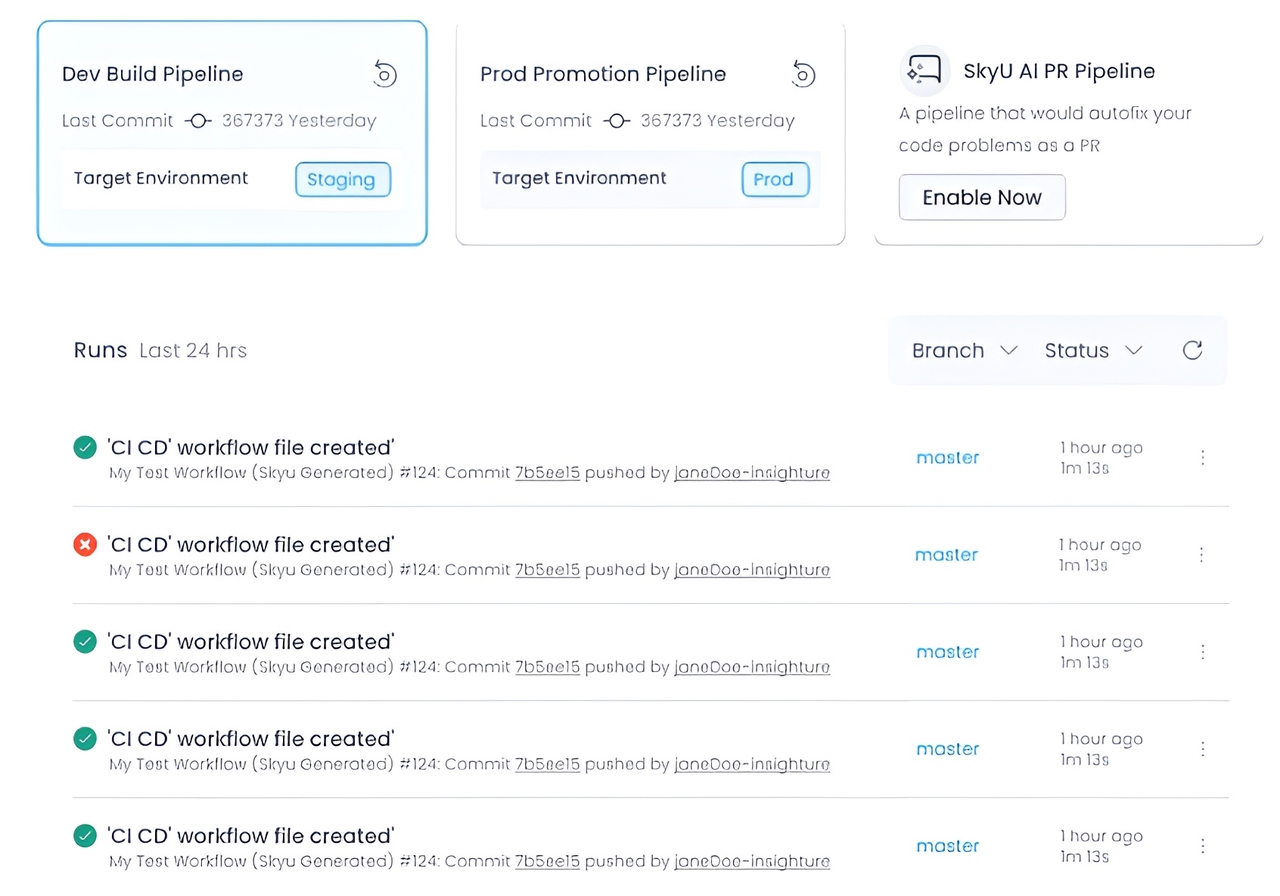You’ve seen developer onboarding go well and also seen it go sideways in ways that make you wonder how companies ever ship anything. Bringing new engineers into a team is like adding a new instrument to a band. If you just hand them a guitar and point to the stage, it will not sound the best. But give them a clear process, some guidance, and a chance to practice, and suddenly, they’re making music.
The problem is, that onboarding isn’t always a priority. Companies focus so much on hiring the best talent, but then they throw them into the deep end with little more than a Slack invite and a Jira ticket. And then they wonder why it takes months for new developers to be productive.
So, let’s talk about how to do this right. Here’s an onboarding checklist that works. One that doesn’t just help new devs survive their first few months but sets them up to thrive.
1. Start Before Day One
The best onboarding begins before a developer even logs in for the first time. Think about it: the first days are overwhelming enough without having to chase down access credentials and figure out who to ask for help.
Set up their accounts in advance. Provide a clear onboarding document with links to everything they’ll need, from internal tools to team structures. Give them a buddy or mentor who can answer the “dumb” questions (which, let’s be honest, aren’t dumb at all). Maybe even send them a welcome email with some context about what to expect in their first week. A little preparation goes a long way in making new hires feel like they belong from day one.
2. Make the First Day About People, Not Just Process
Nobody joins a company just to write code. They join a team. Yet, so many onboarding processes focus purely on getting through paperwork and setting up environments.
You should take the time to introduce new devs to their teammates. Schedule one-on-ones with key people they’ll be working with. Have a welcome lunch (virtual or in-person). Consider assigning them a project “tour guide” who can walk them through how things work in the company’s codebase and development workflow. Your goal is to make them feel like part of the team, not just another name in a Slack channel.
3. Streamline Environment Setup
Nothing kills enthusiasm faster than spending three days wrestling with local development setup. If you want your new devs to contribute quickly, then remove unnecessary friction.
A good onboarding checklist includes a clear, repeatable way to get up and running:
- One-click environment setup (Docker, anyone?)
- Clear documentation for installing dependencies
- Pre-configured development environments with access to logs, databases, and cloud environments
But we know that environment setup means more than getting code to run locally. Developers must understand how to debug and test their changes effectively.
Your new hires should have immediate access to:
- Logging and monitoring tools: Whether it’s Datadog, Grafana or another monitoring stack, they need to know how to track down issues in production.
- Debugger setup: Debugging workflows for local, staging and production environments should be clear from day one.
- Test environments and CI/CD pipelines: Where do tests run? How do they ensure they don’t break something when pushing changes? A clear introduction to test automation and CI/CD processes removes unnecessary anxiety around deployments.
Even better? Automate as much of this as possible. The faster a dev can push their first PR, the faster they feel like they’re making an impact. Investing in scripts, containerised setups, or developer platforms can drastically cut down on lost time and frustration.

4. Give Them Small, Meaningful Tasks
The classic mistake: assigning new developers something massive and vague like “get familiar with the dev environment.”
Instead, you should guide them through bite-sized, meaningful contributions:
- Fix a small bug that introduces them to a key part of the system.
- Improve a piece of documentation based on their onboarding experience.
- Write a test for an existing feature to understand code quality expectations.
These tasks help them understand the dev environment in a hands-on way while also making them feel useful from the start. They also serve as natural conversation starters for asking questions and learning the team’s workflow.
5. Document the Right Things (and Keep It Updated!)
There’s nothing worse than documentation that’s either nonexistent or so outdated that it’s more confusing than helpful. But let’s be honest. Nobody likes writing docs.
Make documentation part of your culture:
- Keep README files current and ensure they actually reflect how things work.
- Maintain an internal wiki or Notion page with onboarding guides, team norms, and architectural decisions.
- Encourage developers to update documentation as part of their PRs, rather than treating it as an afterthought.
It should also help developers understand who owns what. A new hire should be able to quickly answer:
Who owns each service or component?
Where do dependencies live, and how do they interact?
How does deployment work, and what are the post-deployment steps?
Interactive documentation tools (like the features offered by our SkyU platform) can help make ownership clear, providing service maps, API references, and dependency graphs that let developers explore rather than just read static pages.
6. Expose Them to the Bigger Picture
It's a known fact that new developers often get stuck focusing only on the tasks in front of them. However, understanding the “why” behind the code is just as important as knowing the “how.”
What you need to do is give them a broad view of the product and its users.
- Walk them through the customer journey with real user stories.
- Show them the company roadmap and how their work fits into larger initiatives.
- Explain business goals, product priorities, and technical trade-offs the team is currently navigating.
When your developers understand the impact of their work, they’re more engaged, make better architectural decisions and contribute more meaningfully.
New hires also need to understand how incidents and operational workflows fit into the big picture.
- Incident management: What happens when a service goes down? Who gets paged? How do post-mortems work?
- Runbooks & playbooks: If a service starts failing, where do they go to diagnose and resolve it?
- Security & Compliance: Are there coding practices or security protocols they need to follow from day one?
Understanding the bigger picture helps in making sure developers don’t ship something that accidentally breaks everything else.
7. Create a Safe Space for Questions
Asking questions is a huge part of getting up to speed on things.
The best thing you can do to foster a culture where it’s okay to not know everything. Some ideas:
- Have a dedicated Slack channel for onboarding questions where no question is too small.
- Make it normal for senior devs to share their learning experiences and past mistakes.
- Encourage pair programming, knowledge-sharing sessions, and shadowing opportunities.
A strong support system during onboarding speeds up the learning process and helps new hires integrate into the team more smoothly.
8. Check In & Then Keep Checking In
Onboarding doesn’t end after the first week (or even the first month). It takes time to get fully integrated into a team.
Set up regular check-ins like:
- A casual end-of-week chat to see how things are going.
- A structured 30-day and 90-day review with clear milestones.
- Opportunities for new hires to provide feedback on the onboarding process itself.
Onboarding isn’t a one-size-fits-all process, and regular check-ins allow you to adapt based on each developer’s unique experience and needs.
And Here’s Where Things Get Interesting…
You might be thinking: “This all sounds great, but it also sounds like a lot of work.” And you’d be right. Doing onboarding well is work. But it pays off. Teams that get this right see higher retention, faster productivity, and a better developer experience overall.
That’s why some companies are looking beyond just onboarding checklists and toward developer experience platforms that handle the heavy lifting. For example, platforms like SkyU are helping teams automate environment setup, streamline workflows, and make it easier for new devs to contribute from day one. When you remove friction, you don’t just onboard developers; you set them up to stay and succeed.
So if you’re still relying on tribal knowledge and outdated Google Docs to get new hires up to speed, maybe it’s time to rethink how you do onboarding. Because a great onboarding experience isn’t just nice to have. It’s a competitive advantage.
Want to see how SkyU can simplify onboarding and improve developer experience? Teams using SkyU reduce onboarding time by 30%.
SkyU’s recent success with a leading RegTech company highlights how automated DevOps workflows can reduce deployment time from a full day to minutes, improving developer onboarding, security, and scalability.
Take a quick tour and see it in action.








